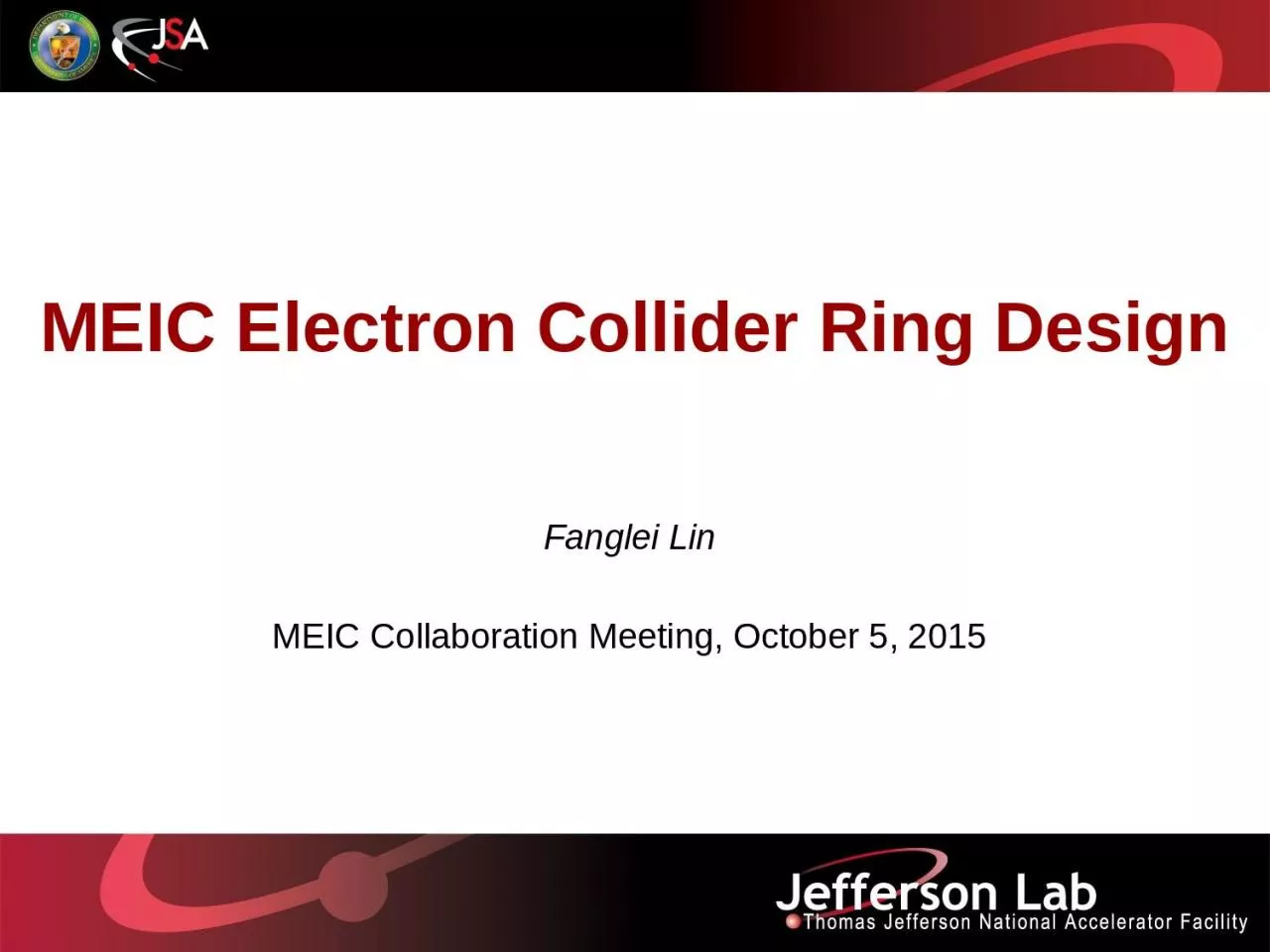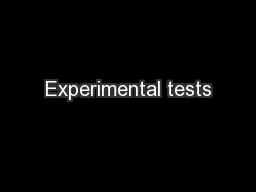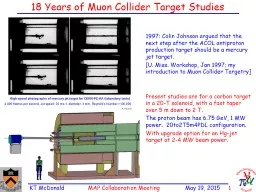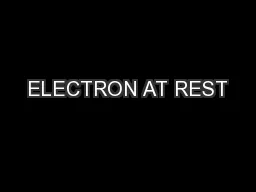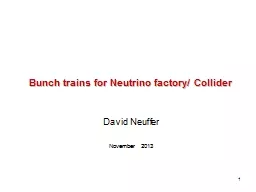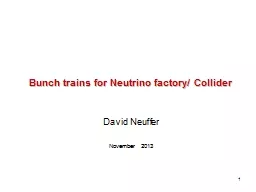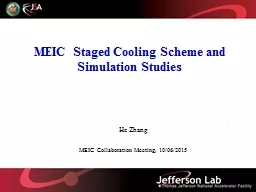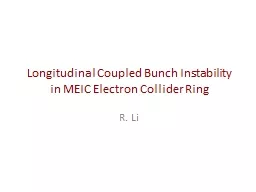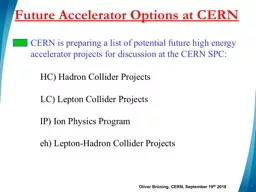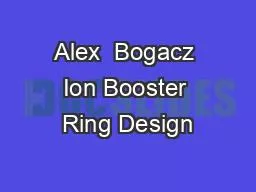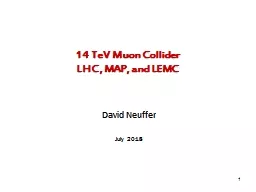PPT-MEIC Electron Collider Ring Design
Author : violet | Published Date : 2023-09-24
Fanglei Lin MEIC Collaboration Meeting October 5 2015 Electron Collider Design Goal Electron beam parameters 310 GeV energy 3A beam current up to 67 GeV 1cm bunch
Presentation Embed Code
Download Presentation
Download Presentation The PPT/PDF document "MEIC Electron Collider Ring Design" is the property of its rightful owner. Permission is granted to download and print the materials on this website for personal, non-commercial use only, and to display it on your personal computer provided you do not modify the materials and that you retain all copyright notices contained in the materials. By downloading content from our website, you accept the terms of this agreement.
MEIC Electron Collider Ring Design: Transcript
Download Rules Of Document
"MEIC Electron Collider Ring Design"The content belongs to its owner. You may download and print it for personal use, without modification, and keep all copyright notices. By downloading, you agree to these terms.
Related Documents

